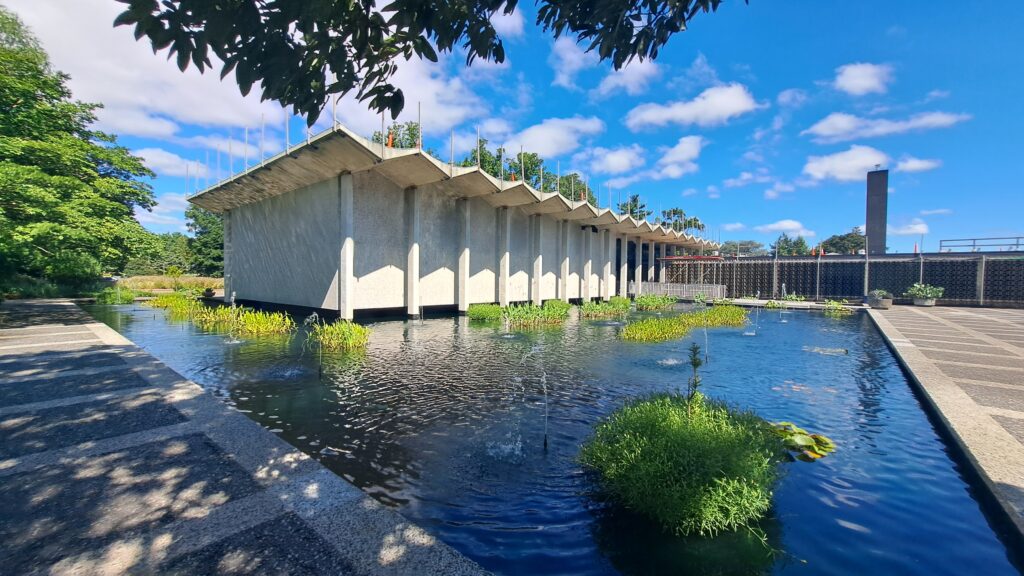
So close!
This time of year, it’s good to take a delightful daytrip. My destination? The National Arboretum in Washington D.C. It is less than ten miles from Reagan International, and feels a world away from many of the other popular sites in the nation’s capital.
Getting there
From Charlottesville, Virginia, it’s an easy trip north of Route 29 until about 30 minutes from the capital. I live in the country and am not well-versed on driving the interstate. The action-packed lanes of Interstates 95 and Route 66 (the main road into D.C.) are a bit intense for this day tripper! There are lots of inexpensive restaurants, farm stands and gas stations on this “29”. If you travel at the right time of day (Between 10 p.m. to 7 a.m. or between 10a.m.-2p.m.), traffic is less stressful.
Conversely, there are buses, trains and the option to park the car and take a Metro into the city. The closest is Norma Gallaudet U stop, though; it’s still almost an hour’s walk to the arboretum.
Luckily, there is plenty of free parking. Admission to the arboretum itself is also free, as well as the on-site National Bonsai and Penjing museum.
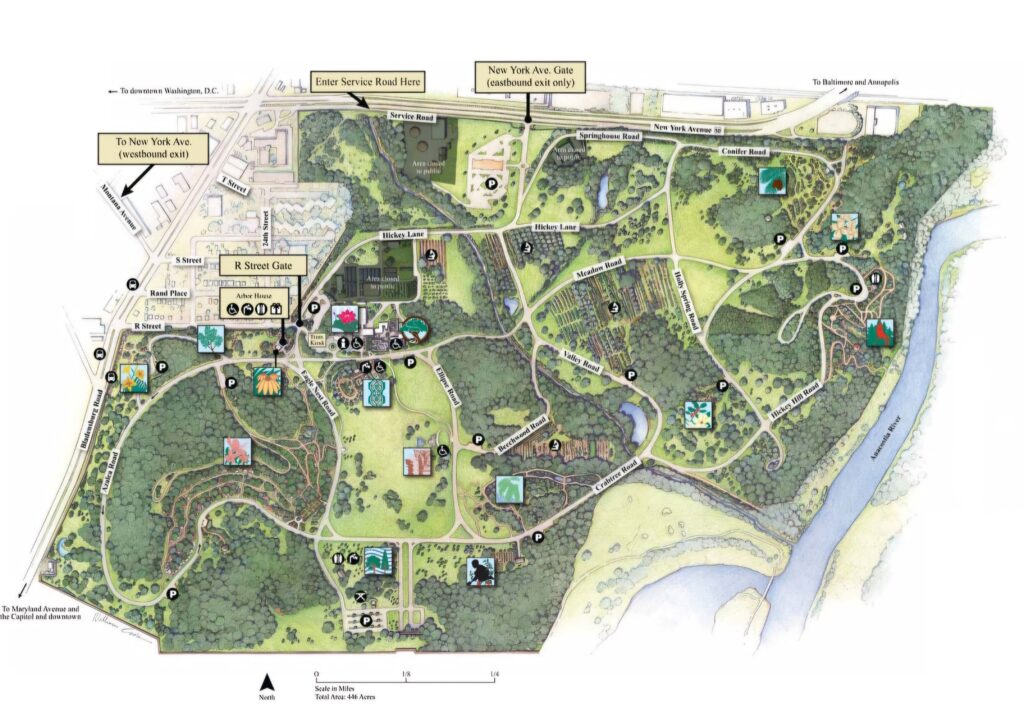
The Lay of the Land
To begin with, the garden itself is about 455 acres. It contains 10+ distinct garden areas (Herb Garden, Asian Garden, Conifer Collection, State trees, Washington Youth Garden, etc.) on over four miles of trails, with parking spaced throughout.
Though I’d rarely encourage driving to most sites in Washington D.C., the arboretum is an exception. The area is spread out. If you are trying to see everything, or need easy access, having a car on-site definitely helps. I recommend picnicking there, too. However, if you neglected to bring a spread, you may want to leave and bring something back. If you’re an avid gardener, expect to spend several hours (if not the entire day) here. I was there from 10a.m.-3p.m. and didn’t get to see everything.
Arriving
Personally, it made sense to park in the first lot I saw. That was the one adjacent to the Arboretum’s administration offices, and the National Bonsai and Penjing museum. I went to the museum first. My pull-in spot was near shaded seating (for my future picnic plans). Since I arrived early, I was able to also park under the trees of my future picnic locale. Score!
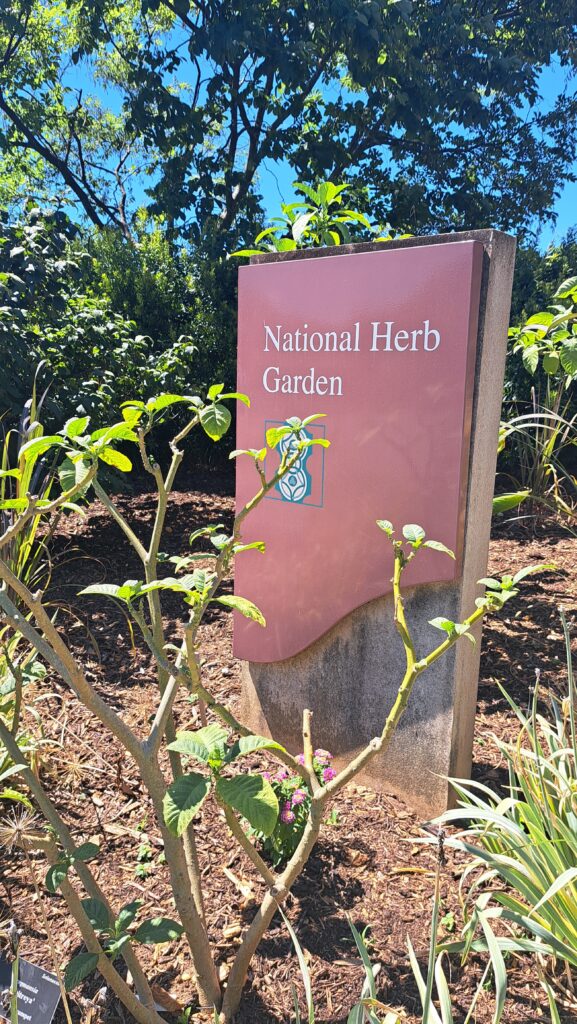
Urban Herbs
Consequently, I did make it a point to stroll around the herb garden. As a permaculturist and amateur herbalist, I have grown and used herbs for over 30 years. The herb garden here did not disappoint.
The garden is laid out in a circle, with shady edges and a sunny center. The sprinklers were on to help modify the effects of drought being felt in most of the region. In the heat of this summer, the cool sprays of water were refreshing.
As usual, one of my favorite things about visiting public herb gardens is “meeting” new plants. (Plants I have used for years but have never grown myself.) In places like these, they have funds and labor to keep certain plants (such as banana and cacao) alive. Despite all reason, they are happily growing there, outside of their typical zones (9+).
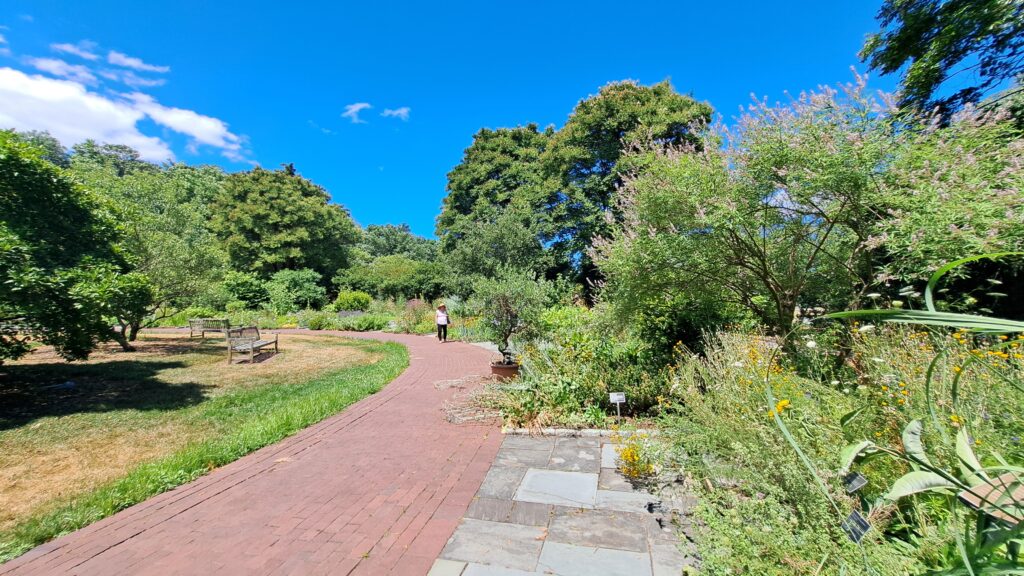
Other surprises
A rather new development in public gardens are the things like Milkweed, Mullein and Pokeroot growing. Anyone that has gardened for a while in Virginia might once have considered these plants to be weeds.
Presently, more public gardens are promoting their ornamental and medicinal values. In the case of Milkweed, it currently receives pure celebration. This is likely due to it being the only plant a Monarch caterpillar eats. I say, “Bravo!”
I spoke to someone tending the herbs and was able to commend the job they do. Despite the heat, most things looked well-watered and mulched. I learned (belatedly) that yes, visitors can take informal photos. Events like professional shoots for commercial purposes (i.e. weddings or engagements) do require a permit. Noted.
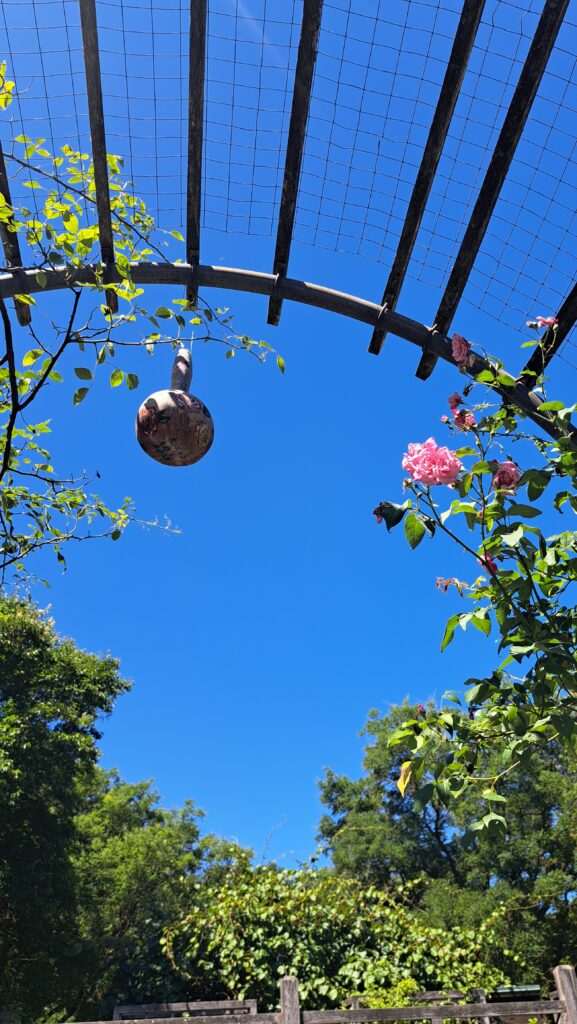
Stop and smell the everything
Obviously, take your time in public herb gardens. SMELL the roses. And the many other delights of the senses. Watch for pollinators. Listen to birdsongs. Smile at other visitors. Complement the staff. Ask questions of both workers and patrons if you want to know more about what you’re seeing. I like going to these places by myself, so i can linger, but I never feel alone. I always leave with a sense of camaraderie with the other gardeners.
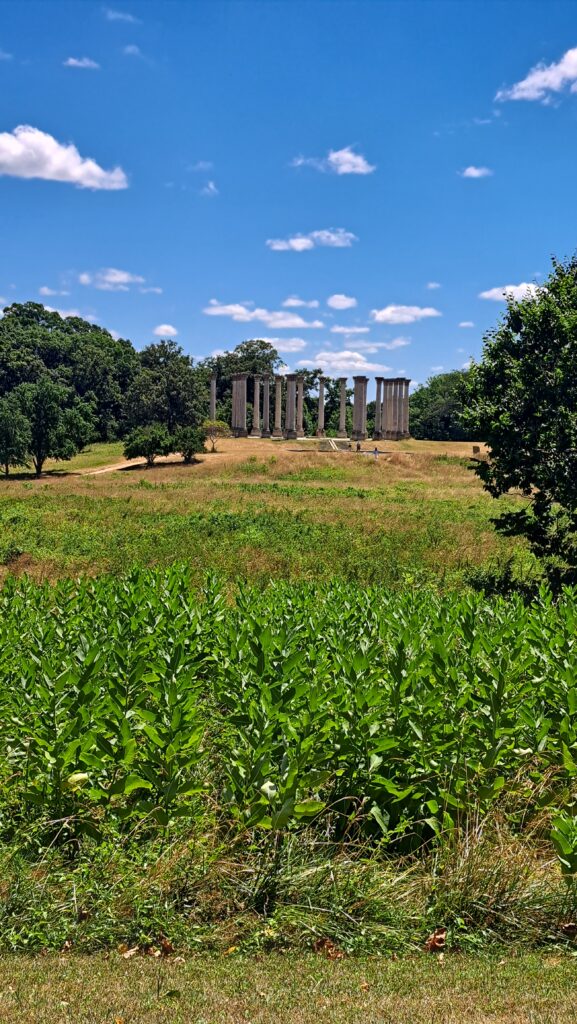
Monument to a meadow
Next, I walked through the glorious meadow and up to the famous columns. Their spot, atop a high knoll overlooking all the Arboretum’s grounds is majestic. The spot also ties in nicely to the other national sites a few miles away. Places like the Capitol, the Smithsonian museums, Jefferson Monument, etc…all those marble columns.
Fittingly, when renovating the Capitol building some time back, the columns were moved here. This site is northeast of downtown D.C. Somehow, they mark the joyful absence of buildings. Their placement seems an ode to the trees for which this living museum was established.
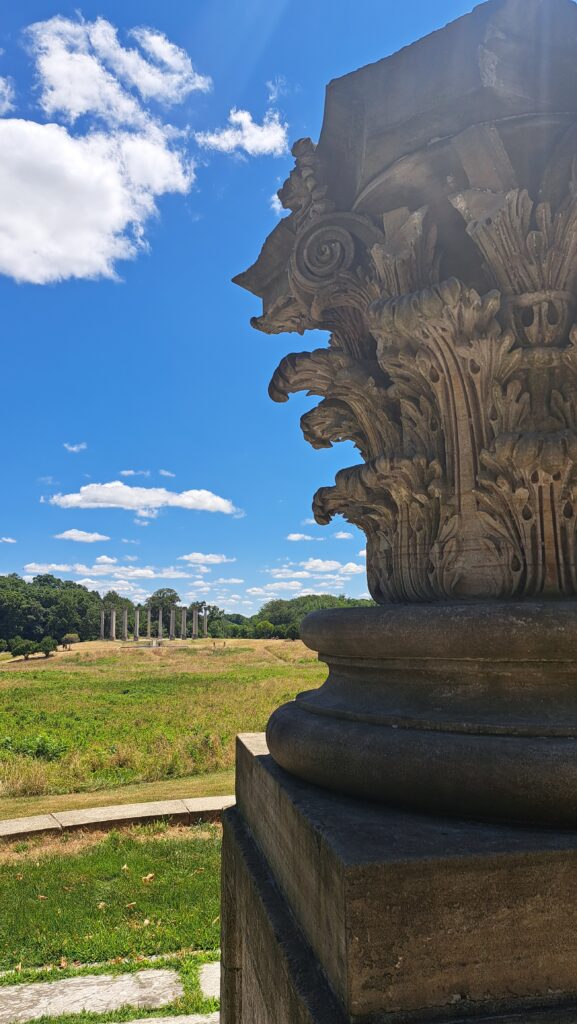
A Day Well Spent
I had the sense of making a pilgrimage as I walked through the extensive meadow uphill. Like the Capitol, there is also a reflecting pool at its base, though it was being serviced the day I was there. I felt oddly reverential. The presence of trees, meadows, open skies and a comparative cool (78 degrees) day added to this feeling. After working many intense 100+ Fahrenheit days the previous week, it was a welcome respite.
To consider
From there, I went to the Washington Youth Garden, where I finished my visit. I highly recommend taking a detour to these columns, though. They are not quite as close to parking or other amenities. It seemed like a “distinctly-D.C.” thing to do as a visitor, or someone that needs to slow down. Which is probably almost anyone reading this.
Visit
The National Arboretum is open 8 a.m. to 5 p.m. daily, except Christmas Day (December 25th) when it is closed.
“The Arboretum is dedicated to the enhancement of the economic, environmental, and aesthetic value of ornamental and landscape plants through multidisciplinary research, conservation of genetic resources, and interpretive gardens and exhibits.”- From the Visitor Guide
3501 New York Avenue NE Washington, D.C. 20002. 202.245.4523 U.S. National Arboretum (usda.gov)
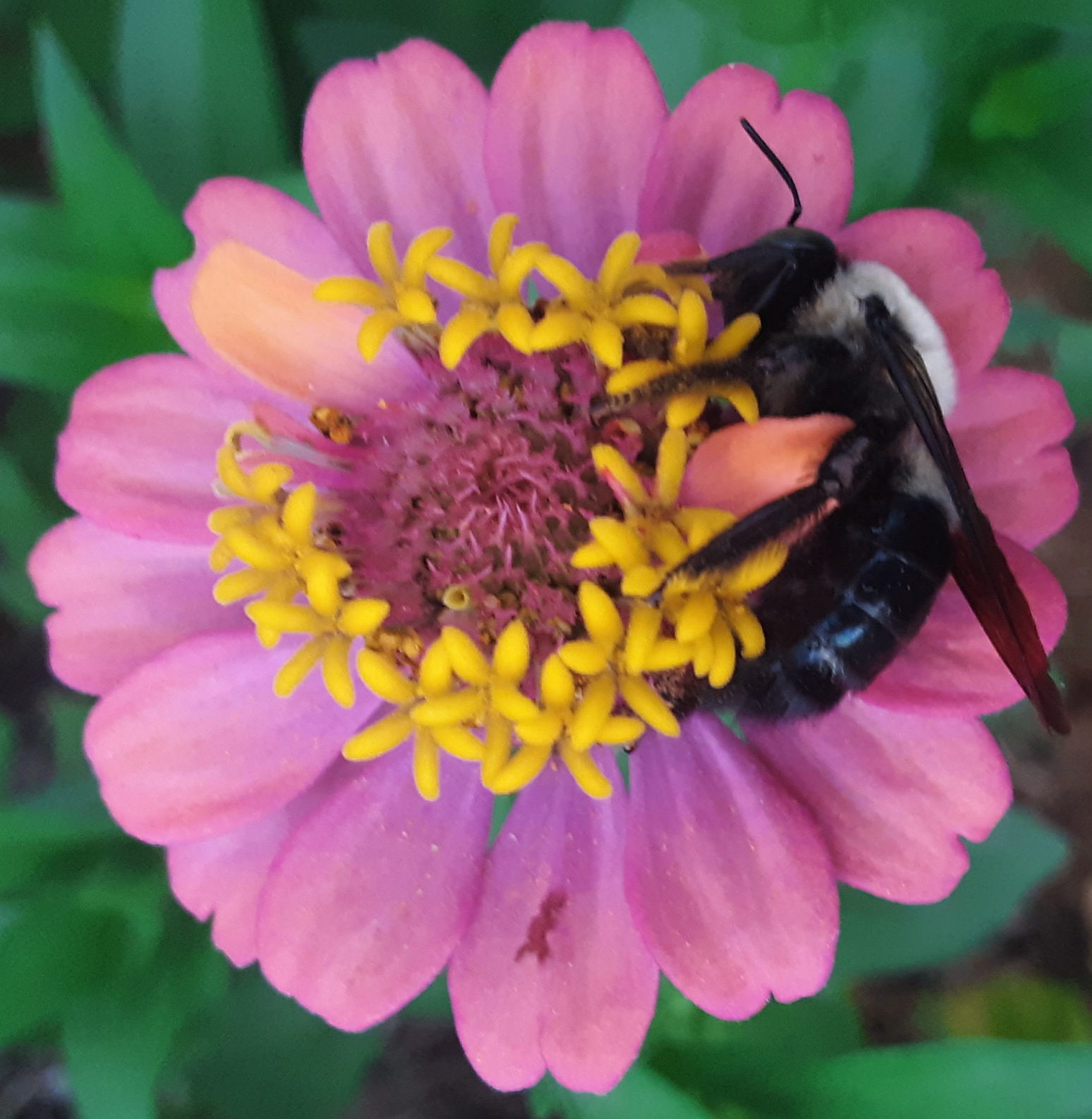
https://shorturl.fm/pC1sW